#Cellular modem
Explore tagged Tumblr posts
Text
It’s Upgrade Time! Why the iPhone 16e is the Smartest Choice You’ll Make This Year!
Hold onto your seats, iPhone enthusiasts—it’s time to upgrade, but not just any upgrade! Instead of rushing into the latest smartphone trend, I’m playing it smart and waiting a little longer to get my hands on the brand-new iPhone 16e! Why? Because patience is the ultimate superpower, and in this case, it’s about to pay off BIG TIME. Not only will you get the latest and greatest from Apple, but…
#48MP Fusion camera#A18 chip#affordable iPhone#Apple Intelligence#Apple iPhone 16e#best smartphone 2024#C1 cellular modem#iPhone 16e#iPhone 16e camera#iPhone 16e design#iPhone 16e features#iPhone 16e launch#iPhone 16e performance#iPhone 16e pre-order#iPhone 16e price#iPhone 16e release date#iPhone 16e specs#iPhone 16e storage#iPhone upgrade#satellite features
0 notes
Text
https://www.htfmarketintelligence.com/report/global-cellular-modem-chipset-market
0 notes
Text
Conventional or Online? Sourcing Dilemma in the Industrial Automation Industry Resolved !
The internet has taken the world by storm. With online ordering from e-commerce retailers becoming the new norm, sourcing of components online was not to be left far behind. Here, we compare the traditional and online modes of procurement in the industrial automation industry that can enable organizations to make an informed choice.

#industrial automation#industrial control systems#plc system#industrial cellular modems#plc systems in india#industrial automation services#allen bradley products#controllogix#allen bradley plc
1 note
·
View note
Note
Do you have a favourite rotary telephone?
Excellent question!
Yes, I have a favorite:

The Northern Electric Pyramid phone from about 1935. I had this on my desk at my old job, tied into the telephone system. Its distinctive ring made it really easy to discern if I was the one being called instead of my coworkers. The chrome dial and the area code indicate that this unit came from Canada.
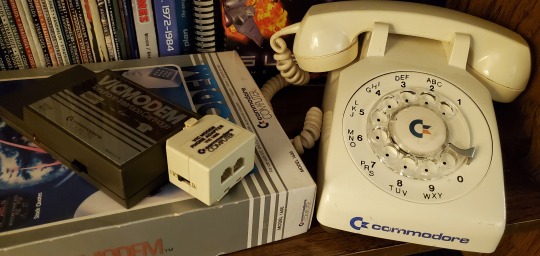
Coming in second place is my Northern Telecom 500-style set with official Commodore branding -- also from Canada. These were sold with VICMODEMs in a special bundle exclusively in the Canadian market. The VICMODEM requires that you detach the cord from the handset, plug it directly into the modem, then dial for the computer.
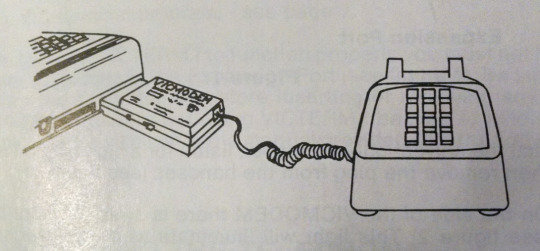
Problem is that you can't do that here, because the handset cord is permanently attached! Solution? The little white adapter box called the VIC 1605. Very hard to find, but I found one.

Coming in third place would be the Contempra from Northern Electric/Telecom from 1967 (why do these keep being Canadian?). Beautiful colors, angles. Great phone, but sadly I don't have one. Atleast not one like this... NT made these into lineman's test sets (commonly called butt sets because they hang on a lineman's belt by their butt/you use them to butt-in to a call when testing things).
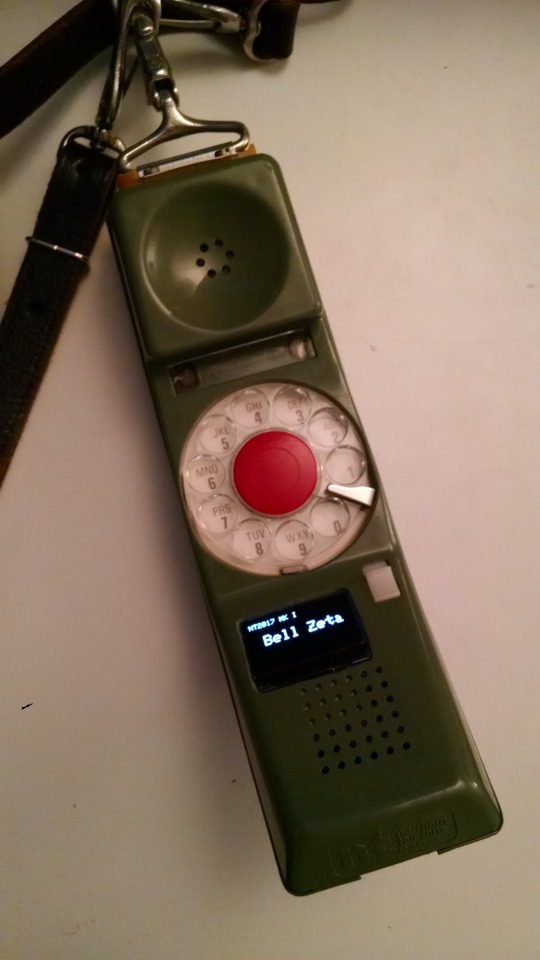

I bought one and turned it into the NT2017 Rotary Cellphone, a real working 2G cellular telephone. It's got an Adafruit Fona board inside with an Atmel 32U4 microcontroller, a little screen, and zero ability to send/receive text messages. It didn't work very well, but it was really fun to build and use before it broke. Construction was very fragile, and my code running it was hot garbage. Since the discontinuation of 2G cell service, it's just decorative at this point.
The last one of my favorites is one I certainly don't have: a late 19th century Skeleton Telephone from Ericsson. Technically not a rotary phone, but it does have a crank that you rotate!

These are expensive, really hard to find, and obviously rather difficult to use without having an operator to ring up when you turn the crank. However, they are stunningly beautiful, and all of the functionality is on display arranged in such a way to accentuate the elegance of its industrial design.
How about you? Do you have a favorite rotary phone?
108 notes
·
View notes
Text
god damn I fucking hate ISPs dude
there's an ISP in my line of work that's been peddling "100x100 fiber anywhere in North America" and someone in my company, somehow, fucked around, fell for this scam, and started ordering this for problem sites.
we're now in the finding out phase where it turns out they're just fucking cellular modem resellers like you'd get from those terrible T-Mobile home internet ads??? we've had at least a couple dozen sites all report issues with internet speeds in the 256kbps range making the store non-functional.
their solution if their shitty resold SIM cards don't work? fucking Starlink, baybee. which they still market as fiber service in their sales material lmfao
75 notes
·
View notes
Text
Business / Tech
Apple launches the iPhone 16e, a cheaper new version of the iPhone 16
By Lisa Eadicicco, CNN
4 minute read
Updated 11:55 AM EST, Wed February 19, 2025

People walk by an Apple store at the Westfield UTC shopping center on January 31, 2025 in San Diego, California.Kevin Carter/Getty Images North America/Getty Images CNN —
Apple on Wednesday announced a cheaper new version of the iPhone 16 called the iPhone 16e, signaling a renewed push into the budget smartphone market for the tech giant. It’s also the first iPhone with a cellular modem designed by Apple, and the cheapest iPhone Apple currently sells that supports Apple Intelligence.
The iPhone 16e costs $599 and launches on February 28.
Adding Apple Intelligence on a cheaper iPhone could be crucial for putting the company’s AI tools in the hands of more consumers. Apple has faced increased competition from Google and Samsung in recent years, both in the budget smartphone market and in the AI space. Google’s cheaper Pixel A-series of phones have been well received, for example, and both Google and Samsung have prioritized updating Android devices with new AI features over the last year.
The launch also marks a shift away from the iPhone SE, the budget iPhone line Apple debuted in 2016 and last updated in 2022. The iPhone SE made up only a sliver of Apple’s iPhone market share, according to research firm Consumer Intelligence Research Partners, which reports it accounted for just 5% of US iPhone sales as of December 2024.
The iPhone 16e, despite being more expensive than the SE, could be more appealing to those who want a device that feels more like Apple’s more recent phones. The iPhone SE was the last iPhone with a traditional home button and fingerprint sensor on the front, a longtime staple that Apple began shifting away from with the iPhone X in 2017.

Apple announced the iPhone 16e on February 19.Apple
What the iPhone 16e can do
Apple claims the new 5G modem in the iPhone 16e is the “most power-efficient modem ever on an iPhone.” The new modem is arriving more than five years after Apple acquired the majority of troubled chipmaker Intel’s smartphone modem business in 2019. Using its own modems makes Apple less reliant on partners and suppliers, giving it more control over product development and launch timing.
The iPhone 16e marks a long-awaited overhaul to Apple’s cheaper iPhone. The $429 iPhone SE, while less expensive, looked like the seven-year-old iPhone 8 and lacked features found on most new phones, such as face unlock and a nearly borderless screen. After Wednesday’s announcement, the iPhone SE is no longer available on Apple’s online store.
Unlike the iPhone SE, the iPhone 16e has a lot in common with the iPhone 16, bringing it up to speed with Apple’s current lineup. Both phones have a 6.1-inch screen, Face ID, a 48-megapixel camera and the Action button for programming shortcuts. However, the iPhone 16e is cheaper and it lacks a dedicated second camera for capturing wider shots and the Camera Control button for quickly accessing the camera.
It’s powered by the same processor as the rest of the iPhone 16 lineup, enabling it to run Apple Intelligence.
Apple Intelligence, which until now has only been available on the iPhone 16 family, 2023’s iPhone 15 Pro and Pro Max and certain iPads and Macs, is a blanket term that refers to a handful of AI-powered tools – such as the ability to generate emojis and images with a prompt, summarize notifications, and remove objects from photos as well as ChatGPT integration with Siri.
The popularity of ChatGPT following its late 2022 release sent a shockwave through the tech industry, prompting companies such as Microsoft, Google and Samsung to incorporate generative AI into their products.
But Apple was largely considered to be a latecomer to consumer-facing artificial intelligence. Like many tech companies, Apple has long used AI to power backend features, like camera modes, but didn’t begin rolling out Apple Intelligence until last fall. Apple Intelligence’s arrival on a cheaper device like the iPhone 16e signals the company sees AI as being a core part of its products moving forward.
Tech giants have positioned generative AI and chatbots as the next major evolution in how consumers use and interact with technology. Yet it’s unclear whether AI tools like Apple Intelligence will be compelling enough to drive smartphone upgrades, with Apple’s iPhone revenue falling short of Wall Street’s expectations in its fiscal first quarter of 2025.
4 notes
·
View notes
Text
Luxembourg-based satellite telecom operator OQ Technology is testing investor appetite for space-based Internet of Things (IoT) technology, seeking EUR 30 million in fresh funding as competition intensifies in the nascent market for satellite-enabled device connectivity.
The company, which has deployed 10 satellites since 2019, plans to launch 20 more as larger telecommunications companies and satellite operators begin developing similar IoT services. The Series B funding round follows a EUR 13 million raise in 2022 and aims to strengthen its global 5G IoT network coverage.
OQ Technology has secured initial backing through a convertible loan from the Luxembourg Space Sector Development Fund, a joint initiative between SES S.A. and the Luxembourg government. Previous investors, including Aramco's venture capital arm Wa'ed Ventures and Greece's Phaistos Investment Fund, are participating in the new round.
The startup differentiates itself by focusing on standardized cellular technology for narrowband-IoT, contributing to 3GPP protocols that allow existing cellular chips to connect with satellites. This approach contrasts with proprietary systems offered by competitors, replacing traditional bulky satellite systems with compact, cost-efficient IoT modems that offer plug-and-play functionality.
"The satellite IoT sector is still largely in the proof-of-concept phase," says the company representative. "While there's significant potential, companies face challenges in standardization and convincing industries to adopt these new technologies at scale."
In an effort to secure its supply chain, the company is exploring partnerships in Taiwan's semiconductor industry. It has begun collaborating with the Industrial Technology Research Institute (ITRI), though these relationships are still in the early stages. The company has shipped initial terminals to prospective Taiwanese clients, marking its first steps in the Asian market.
The global reach for semiconductor partnerships comes as the company expands its geographical footprint, having established subsidiaries in Greece, Saudi Arabia, and Rwanda. Plans for US market entry are underway, though regulatory approvals and spectrum access remain hurdles in some markets.
Current clients include Aramco, Telefonica, and Deutsche Telekom, primarily using the technology for asset tracking and remote monitoring in industries such as energy, logistics, and agriculture. While the company estimates a potential market of 1.5 billion devices that could use satellite IoT connectivity, actual adoption rates remain modest.
"The challenge isn't just technical capability," notes the company representative. "It's about proving the economic case for satellite IoT in specific use cases where terrestrial networks aren't viable but the application can support satellite connectivity costs."
Market dynamics are also shifting. Recent announcements from major tech companies about satellite-to-phone services have sparked interest in space-based connectivity, but may also increase competition for spectrum and market share. Several companies are pursuing similar standards-based approaches, potentially commoditizing the technology.
For OQ Technology, the ability to deploy its planned satellites and convert pilot projects into paying customers will be crucial. While the company's focus on standardized technology may reduce technical risks, successfully scaling the business will require navigating complex regulatory environments and proving the technology's reliability across different use cases.
4 notes
·
View notes
Text
WHAT IS MOBILE ?
A mobile phone, or cell phone,[a] is a portable telephone that allows users to make and receive calls over a radio frequency link while moving within a designated telephone service area, unlike fixed-location phones (landline phones). This radio frequency link connects to the switching systems of a mobile phone operator, providing access to the public switched telephone network (PSTN). Modern mobile telephony relies on a cellular network architecture, which is why mobile phones are often referred to as 'cell phones' in North America.
Mobile phones also support a variety of multimedia capabilities, such as digital photography, video recording, and gaming. In addition, they enable multimedia playback and streaming, including video content, as well as radio and television streaming. Furthermore, mobile phones offer satellite-based service
The first handheld mobile phone was demonstrated by Martin Cooper of Motorola in New Y
Mobile phones are considered an important human invention as they have been one of the most widely used and sold pieces of consumer technology.[7] The growth in popularity has been rapid in some places, for example, in the UK, the total number of mobile phones overtook the number of houses in 1999.[8] Today, mobile phones are globally ubiquitous,[9] and in almost half the world's countries, over 90% of the population owns at least one.[10]
History
Main article: History of mobile phonesMartin Cooper of Motorola, shown here in a 2007 reenactment, made the first publicized handheld mobile phone call on a prototype DynaTAC model on 3 April 1973.In 2001, the third-generation (3G) was launched in Japan by NTT DoCoMo on the WCDMA standard.[15] This was followed by 3.5G or 3G+ enhancements based on the high-speed packet access (HSPA) family, allowing UMTS networks to have higher data transfer speeds and capacity. 3G is able to provide mobile broadband access of several Mbit/s to smartphones and mobile modems in laptop computers. This ensures it can be applied to mobile Internet access, VoIP, video calls, and sending large e-mail messages, as well as watching videos, typically in standard-definition quality.
By 2009, it had become clear that, at some point, 3G networks would be overwhelmed by the growth of bandwidth-intensive applications, such as streaming media.[16] Consequently, the industry began looking to data-optimized fourth-generation (4G) technologies, with the promise of speed improvements up to tenfold over existing 3G technologies. The first publicly available LTE service was launched in Scandinavia by TeliaSonera in 2009. In the 2010s, 4G technology has found diverse applications across various sectors, showcasing its versatility in delivering high-speed wireless communication, such as mobile broadband, the internet of things (IoT), fixed wireless access, and multimedia streaming (including music, video, radio, and television).
2 notes
·
View notes
Text

1st pic with my new iPhone taken more than 24hours after getting it. My new phone experience has mostly been bad. My main motivation for getting an iPhone was wanting a great phone camera and engaging the family hive mind aspect shared by the Apple family. My wife and two of my kids use them. However, at this point, if I could do it over, I’d simply get a high end Samsung.
The good: This pic is a masterpiece compared to what my old phone would produce and being able to track each other and each other’s devices is great. Many of the apps on my android phone ported over and all of those work fine. All the apps I had to manually download work fine as well. The phone’s battery is outstanding so far.
The bad: The cellular modem in our new phones suck!!! Even the WiFi modem is shit compared to my old Samsung A50 and her iPhone 12. I’m probably going to have to upgrade our home WiFi network but that still leaves me no fix for traveling in rural areas with weak cellular coverage. My A50 was a marvel at pulling in a signal. I have 1 bar sitting here at my house! Cellular signal was never a problem here before. I was excited to take advantage of Apple’s MagSafe technology that allows wireless charging combined with magnets that affix your phone to the charger. The idea is brilliant, the implementation is flawed for too many reasons to go into. Also, I’ll never buy a phone at Best Buy again.
Still, this pic was taken in fading light with no physical stabilization and the barn is 4 tenths of a mile away. Just wow.
11 notes
·
View notes
Text
MediaTek Dimensity 7300X Delivers Smooth And Fast Gaming
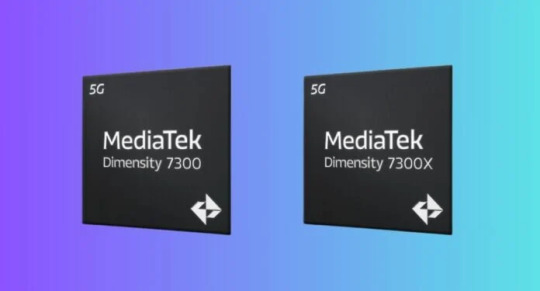
The greatest 5G smartphone processor options for high-end designs are the MediaTek Dimensity 7300 and Dimensity 7300X, which provide next-generation performance for seamless multitasking, remarkable battery life, and amazing displays. The contents of these 5G processors are as follows:
Outstanding Battery Life: Even for the most discerning smartphone users, this ultra-efficient 4nm processor provides best-in-class power efficiency to extend battery life.
Superb Image Quality: With a 200MP primary camera supported by the Imagiq 950 12-bit HDR-ISP, clear photographs are possible under any lighting circumstances thanks to precise face detection, noise reduction, and video HDR. Compared to earlier generations, it offers up to 1.3X faster live focus and 1.5X faster photo remastering. Additionally, 4K HDR video captures a 50% greater dynamic range than rival models.
Amazing Displays: The MediaTek MiraVision 955 enhances media streaming and HDR video playback while supporting WFHD+ displays with 10-bit true colour, providing smartphones with billion colour displays.
Specifically Designed for Flip Phone Designs: With dedicated support for dual displays, the MediaTek 7300X is especially made for flip phone designs.
Accelerated gaming: Up to 20% more frames per second and 20% more energy efficiency are possible with the combination of MediaTek HyperEngine, a potent octa-core CPU (which includes Arm Cortex-A78 processors), and the Arm Mali-G615 GPU compared to competing alternative platforms. Major studio support and the expanding gaming ecosystem contribute to the power and performance enhancements of VRS.
Advanced Connectivity: The processor has Bluetooth 5.4 compatibility, tri-band Wi-Fi 6E, and MediaTek Lightning Connect, which quickens Bluetooth connection times. Based on face proximity, holding posture, and device orientation, MediaTek UAC 2.0 maximises antenna performance.
Enhanced AI Computing: Supporting new mixed precision data types for better performance, power economy, and graphics, the MediaTek NPU 655 offers two times the AI work efficiency of the previous generation.
5G R16 Modem: New 3CC carrier aggregation offers better average speeds and longer reach, while cellular downlink rates have improved to 3.27Gb/s. In typical 5G usage settings, MediaTek 5G UltraSave 3.0+ offers 13–30% more power efficiency than competing options.
Smartphones with Dual VoNR: Premium audio and video call quality is provided by dual 5G SIM phones with dual VoNR.
MediaTek Dimensity 7300X
Superior Power Efficiency
With its next-generation capabilities and best-in-class power efficiency, this ultra-efficient 4nm-class CPU promises seamless multitasking, transcendent captures, superior performance, and improved AI-enhanced computing.
Superior Visual Clarity
For outstanding photography, the MediaTek Imagiq 950 offers a top-tier 12-bit HDR-ISP that supports a 200MP primary camera. When coupled with new hardware engines that offer video HDR, face detection (HWFD), and accurate noise reduction (MCNR), the image quality of captures is guaranteed to surpass experiences with clarity and crispness in any lighting scenario. Compared to previous generation Dimensity, live focus photo performance is up to 1.3X faster and photo remastering is up to 1.5X faster. Capture 4K HDR video with a dynamic range that is more than 50% broader than competing platforms’ offerings, adding more clarity to videos to produce amazing effects while using less power.
Specialised Assistance for Flip Phones with Dual Displays
Flip phones with two displays can now be supported by MediaTek MiraVision 955, with the primary display offering remarkably detailed WFHD+ resolution and 10-bit true colour. A multitude of international HDR standards enhance media streaming and playback, guaranteeing top-notch cinematic experiences while on the road.
Quick Gaming
Together, the 4X high frequency big-core processors in the octa-core CPU, the most recent Arm Mali-G615 GPU, and MediaTek HyperEngine optimisations enable the Dimensity 7300X to accelerate gaming with up to 20% more frames per second and improve energy efficiency by up to 20% when compared to competitor options.
Major studio support and the expanding gaming ecosystem contribute to the power and performance enhancements of VRS. Optimised 5G and Wi-Fi game connections, intelligent resource optimisation, Bluetooth LE Audio technology with Dual-Link True Wireless Stereo Audio, and more are some of the other improvements to the entire smartphone experience.
Bluetooth 5.4, Wi-Fi 6E, and Special Connectivity Features
The most recent version of the Bluetooth standard and tri-band Wi-Fi 6E, which offers incredibly dependable and quick multi-gigabit wireless connectivity, are examples of wireless connectivity.
While MediaTek Wi-Fi/Bluetooth hybrid coexistence technologies ensure that Wi-Fi and earphones, or peripherals like gamepads, work together flawlessly without compromising latency and networking speeds, MediaTek Lightning Connect twice the speed at which Bluetooth connections can be made, enabling quicker than ever device connections.
Depending on the direction of the device, the proximity of the hand or face to the device, and even the fold status of flip phones, MediaTek UAC 2.0 optimises antenna performance for wireless connectivity.
Improved Artificial Intelligence
The MediaTek NPU 655, which offers two times the performance of the previous generation, improves AI task efficiency and supports new mixed precision data types. This opens up new possibilities for device manufacturers to offer users improved performance, better visuals, better power efficiency, and new experiences.
3CC-CA Compatible 5G R16 Modem
Faster 5G with Greater Range
By using 3CC carrier aggregation to address a maximum of 140MHz cellular spectrum, 5G downlink speeds of up to 3.27Gb/s can be achieved, offering better downlink speeds in urban and suburban areas. With the application of mixed duplex FDD+TDD, which combines the benefits of low and mid-band, smartphones in CA can enjoy higher speeds and a wider range. Additionally, carrier aggregation allows for a smooth changeover between two 5G connection areas at the coverage layer, giving consumers more than 30% more throughput layer coverage than they would have without CA.
5G UltraSave 3.0+ MediaTek
In typical 5G sub-6GHz connectivity circumstances, MediaTek 5G UltraSave 3.0+ offers a full range of R16 power saving advancements in addition to MediaTek’s own optimisations that yield 13–30% higher power efficiency than competing options.
Two 5G SIMs
Customers have more options and superior voice and video call quality with dual 5G SIM and dual VoNR.
Mediatek Dimensity 7300X Specs
Processor
CPU
4x Arm Cortex-A78 up to 2.5GHz
4x Arm Cortex-A55
Cores
Octa (8)
Memory and Storage
Memory Type
LPDDR4x
LPDDR5
Max Memory Frequency
Up to 6400Mbps
Storage Type
UFS 3.1
Connectivity
Cellular Technologies
2G-5G Multi-Mode, 5G/4G CA, 5G/4G FDD / TDD, CDMA2000 1x/EVDO Rev. A (SRLTE), EDGE, GSM, TD-SCDMA, WDCDMA
Specific Functions
SA & NSA modes; SA Option2, NSA Option3 / 3a / 3x, NR TDD and FDD bands, DSS, NR DL 3CC 140MHz bandwidth, 4×4 MIMO, 256QAM NR UL 2CC, R16 UL Enhancement, 2×2 MIMO, 256QAM VoNR / EPS fallback
Peak Downlink Speed
3.27Gbps
GNSS
GPS
BeiDou
Glonass
Galileo
QZSS
NavIC
Wi-Fi
Wi-Fi 6E (a/b/g/n/ac/ax)
Wi-Fi Antenna
2T2R
Bluetooth
5.4
Camera
Max Camera Sensor
200MP
Max Video Capture Resolution
4K30 (3840 x 2160)
Camera Features
Hardware Face Detection
Hardware MCNR
4K Video HDR
AI-3A with AE, AWB, AF
Video EIS
Dual simultaneous video capture
All-pixel AF
Graphics
GPU Type
Arm Mali-G615 MC2
Video Encoding
H.264
HEVC
Video Playback
H.264
HEVC
VP-9
Display
Max Refresh Rate
WFHD+ @ 120Hz
Full HD+ @ 144Hz
AI
MediaTek 6th generation NPU
NPU 655
Read more on govindhtech.com
#smartphone#mediatekdimensity7300#mediatek#wifi6e#cpu#Bluetooth5.4#artificialintelligence#gpu#news#technews#technology#technologynews#technologytrends#govindhtech
4 notes
·
View notes
Text
#industrial automation#industrial control systems#plc system#industrial cellular modems#plc systems in india#industrial automation services#allen bradley products#controllogix#allen bradley plc
1 note
·
View note
Text
Good morning, friends! 🌺💮🌼
30 May 2024

We recently had our home phone shut off; I know … we're late to the game. Our phone was ATT U-verse, which is essentially VOIP a phone system that communicates via the internet. But ATT announced that they were shutting down their DSL systems sometime in the near future and encouraged us to switch to ATT air with is a cellular system. They sent me a cellular modem free of charge. I've had a home phone in the house where I lived for nearly three quarters of a century. I can't say I'll miss it though, for the last year or so, it rang throughout the day with nothing but junk calls, telemarketers and what not - quite annoying.
"So I got home, and the phone was ringing. I picked it up, and said 'Who's speaking please?' And a voice said 'You are.'" - Tim Vine
#photo#photography#photographer#photographylovers#wildlife#nature#morning#flowers#wildflowers#telephones
2 notes
·
View notes
Text
2 notes
·
View notes
Text
Pseudo-historical project about 1912 unit record equipment computation aka the "Symbolic Analyst Processor" full stack!
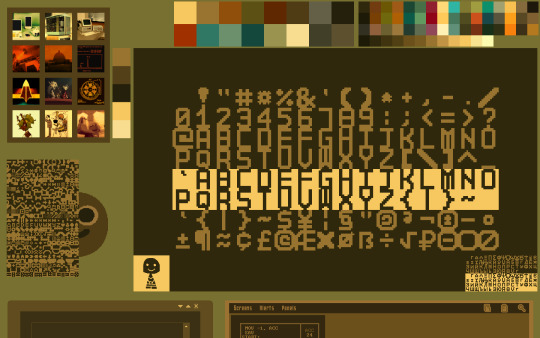
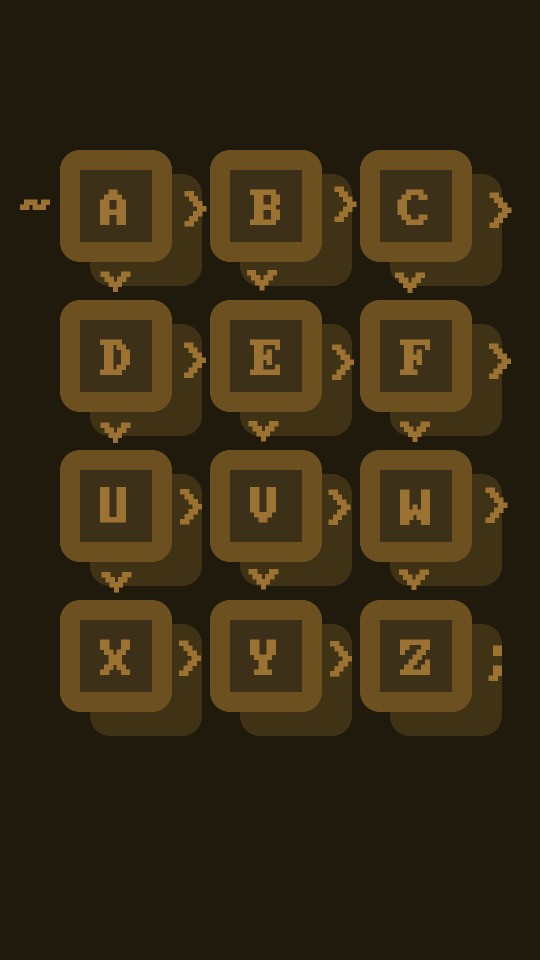

(above pictures emulate the looks of what this tech stack documentation and actual use may look like, still very early in the process though)
It is still coming together by my head as I write infodump notes and research various aspects of the whole time, (including the WIMP & MERN/MEAN stack) but yk, things are coming together nicely to give some milestone project mid-way between my current phase in life and the next where I go develop a fully alternative INTJ lively stack of tools. Explanations, history dives, lively reaction studies and a couple more content suggestions related to it are on the way.
Behold, the infodumps
"Top-bottom and back up workflow" 1910 / 1912 Unit Record Equipment Tabulator Computation "Bundle" Project (Pflaumen & Utalics' SymbolicAnalystProcessor)
Information Processing Language / LISP 1.5 / Bel, A-BASIC / DIBOL, Spreadsheets, Cellular Automaton, COS-310, magnetic tape storage too, TECO / VIM, Assembly, Wirebox, Tabulator, Alphanumeric Interpreter, Printer, RTTY device, Data Recording, Bulk Data Processing Indexed Cards, 60-64 entries Deque, 4K Direct-use RAM, 12K * 24 storage devices, Phonebook, Timeclock, DateTime Calendar, Programmable, Statistics, Demographics, Voting, Ledger, Journal, Logging, Rolodex, 12 Generic-use Registers & 4 Special Registers, Catalog, ~16 Keys Pad, Customized Hexadecimal Numeric Representation for "MachineCode" Hexdumps, 4*12 bits per page of data, Macros, Paracosm, may be useful for Military & Civilian Uses, Electrical Energy (and possibly incorporates some mechanical energy too), Nouns & Verbs, "Vector" XY plotter, Lambda Calculus / Panini Grammar / Universal Turing Machine Thesis, Rotors, Ural TriodeVaccumTube "Mainframe", Interactive-Use, Hypertext Interactive Video Terminal, Memex, Modem, Electric + Radio Telegraphy, Document-processing, Word-processing, Orange Plasma Touchscreen Terminal, Time-sharing, Cash Register, Bank, Automatic Teller Machine, Vending Machine, Oracle, Typewriter / Selectric, IBM 701, IBM 1440, IBM 403, IBM System/360, OpenPOWER, F#, IBM Tellum, MUD, TextWorld, solo text-adventures, Email, AIX, z/OS, Linux for IBM mainframes, Symbolic Processing System, Autocoder, modular, IBM Lotus Suite, interface with KDE or CDE, paper handling equipment, Addventure, 12-bit basic data unit as designated word, Distributed Interactive System, VeneraFS (cladogram Parade+DolDoc), GNU Hurd / MINIX3-style Microkernel, either permissive FLOSS license or public domain waiver, extensive documentation, printed illustrated booklets, music-playback, emulator / compiler / bytecode / interpreter, analog media-friendly, mostly for didactic tinkering educational uses, multilingual reconfigurable programming, HTML+CSS, Markdown, Argdown, DMA, hardware-friendly, software development environment for direct-access programmers and aesthetic designers, sub-version control system like Git, various hardware & software implementations, museum / observatory Toymaker story, constructed languages / imaginative paracosm influences around the immersive in-world lore of the "16^12" pseudo-historical setting…
Back to the point
The list is far from exhaustive or finished, as life is so much more than meets the eye. But this should be a good start to remind myself what I am working towards, a full revamp of the last ~120 years of history with much attention and care put into making it as satisfying to me as possible, despite the very probable scenario where people take the ideas and incorporate only some of such "modules" in their own workflows. Which is fine but not taking the whole package (and only specific modules) is eventually gonna be a major learning experience for me considering the reason I revamp it all beyond control freak stuff is literally to provide less exclusive / less invasive tools that anyone can learn and customize despite being very... idiosyncratic yk.
Still welcoming suggestions and constructive criticism for such big time, I hope those textual infodumps I do every so often don't bother you too much... Cya soon!
5 notes
·
View notes